
|
Allotment Associations & Horticultural Groups in Harrow, Middlesex |

|
|
|
our annual show website |
DOWNLOAD a PDF Version of our Guide to Showing |
Watch our Staging Guide Video | Show Ground map |

|
Harrow in LEAF's Guide to Showing |
|
You may wish to take a look at photos from our previous Shows, to get an idea of the classes and standards: |
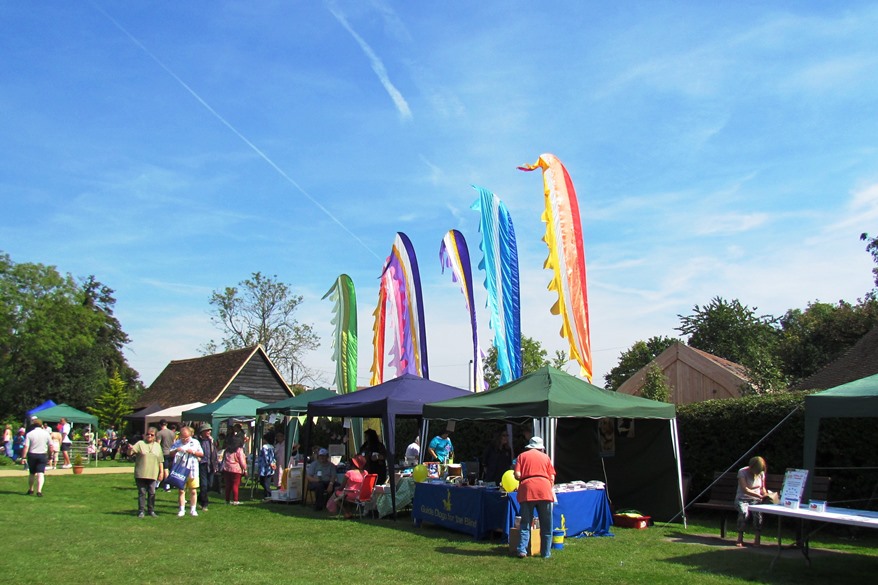 Our 2021 Show Photos |
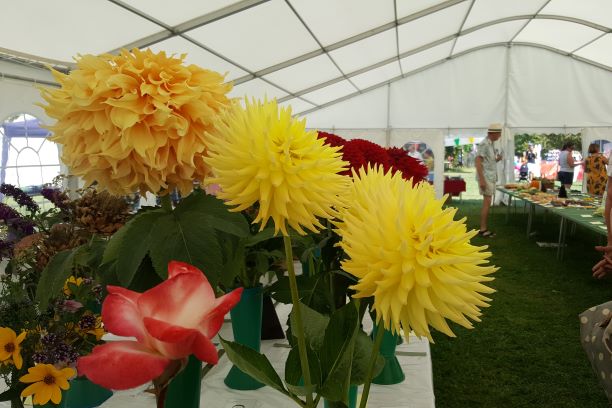 Our 2019 Show Photos |
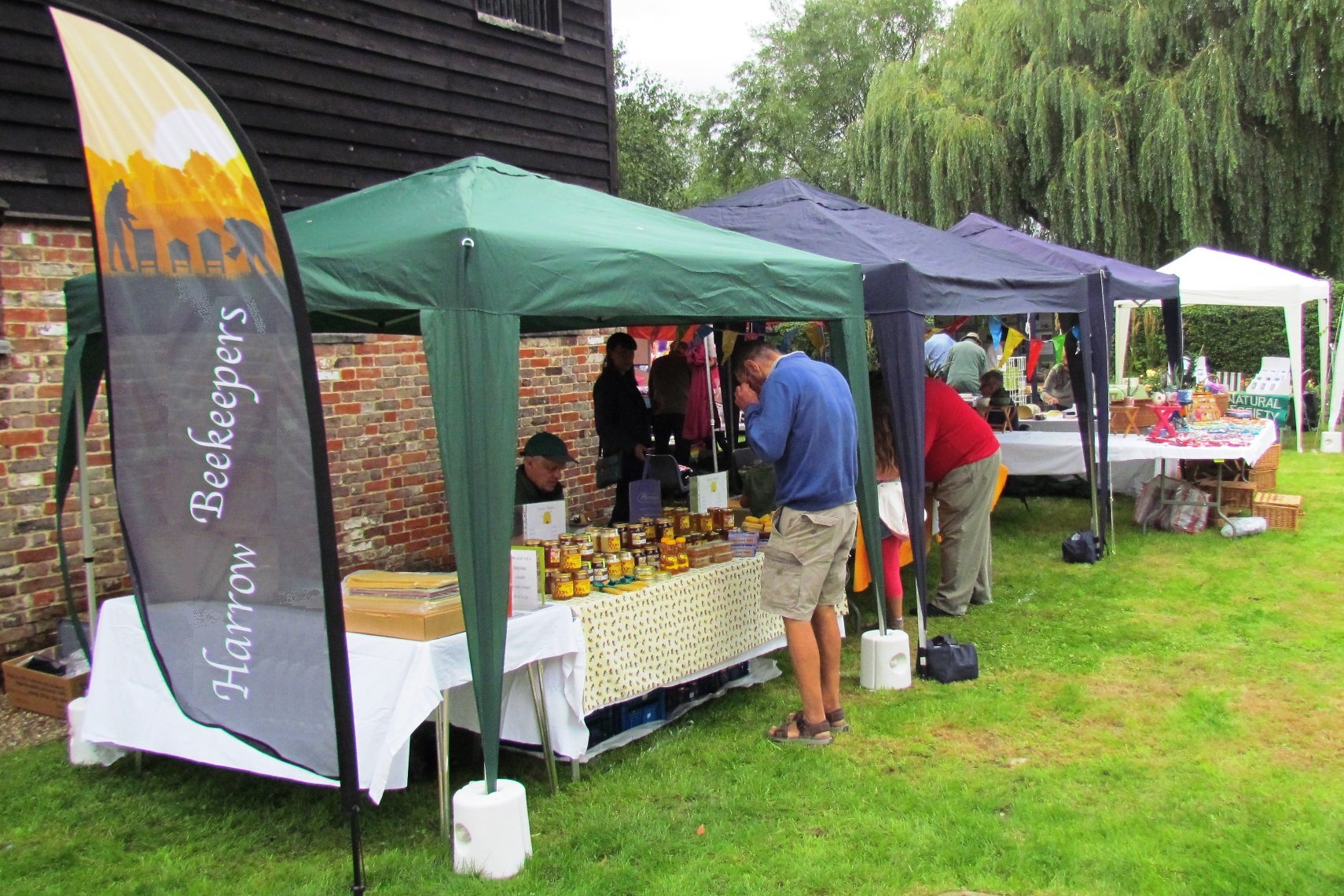 Our 2018 Show Photos |
Don't be afraid of showing - here are some useful hints from Harrow in LEAF: |
|
Have you ever been to a show and thought "mine are as good as that"? Well why not try your hand at entering our show? Even the experienced exhibitors started that way and it really isn't anything to be scared of. You don't need to have grown metre-long parsnips or leeks. Here are a few notes that might help or encourage you, and if you want any further information we have people who can help (and indeed new exhibitors often get help with staging their exhibit at the show itself from experienced exhibitors). There are sometimes classes in the show for novices, but novices often win other classes too. |

|
|
So what is "Staging"?
Quite simply it is setting up and placing your exhibit item within the Exhibit location. Click here ==> to watch our brief video guide to staging for both new and potential exhibitors |
|
What is the Show Schedule?
The schedule tells you what each class requires. Do look at the number of specimens needed and the size if specified; if it says four scones or ten beans, no other number will do, and an onion that is heavier than the limit will also earn you a "not as schedule". Judges use weighing scales and have a series of rings to check diameters, so it is essential to check these for your exhibits. |
|
Here are a few hints, but if you have questions about other things, don't hesitate to contact us.
Vegetables and fruit are judged on: • uniformity (i.e. whether all the items in your exhibit are similar size, shape and colour), • condition (not diseased or too blemished, and fresh rather than wizened, rubbery or wilted), • and size (and bigger isn't necessarily better). For example, potatoes should be medium sized rather than giant bakers, and the longest beans may be knobbly and tough. Unless the Schedule specifies otherwise, you can put your exhibits on paper plates or doilies if you wish, but this isn't essential (except in the Cookery section, where exhibits should always be on plates). The stalk, if there is one, should always be left on fruit and vegetables. |
|
Onions are best displayed on sand or rings - these could be plastic milk-bottle lids or sections of plastic pipe or toilet roll. Remove the loose papery outer onion layers, but stop before you get to the white fleshy layer. |
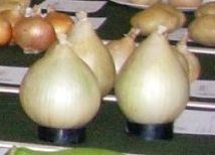
|
|
Wash potatoes, carrots, beetroots and parsnips gently with a sponge to avoid damaging the skin. If potatoes have coloured eyes they count as coloured not white. Beetroots should be no bigger than about tennis ball size. For cabbages, cut off the root but leave about 8 cm of stem and take off only the outermost leaves. Don't trim off the base of rhubarb stems, but trim the leaf to 10-15 cm. |
|
Part of the husks of sweetcorn should be opened up to show the kernels inside but leave the 'silks' intact. Ideally the kernels should go right up to the top of the cob. Flowers, if they are in good condition, can be left on courgettes. |
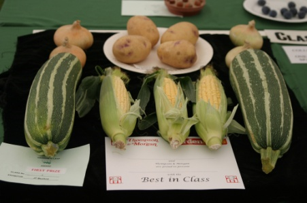
|
|
Don't polish fruit - leave the natural bloom on. Always try to handle fruit by the stalk. |
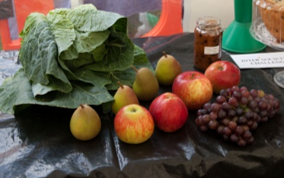
|
|
In most flower classes vases are provided; the rules section in the schedule will tell you if you need to bring your own. You can support the stems in the vase with crumpled newspaper or broken floral foam, but keep it below the rim. Cut off faded flowers and scruffy or diseased leaves. Individual Fuchsia flowers are usually exhibited by poking the flower stalk through foil or black cloth into water or floral foam. Pick flowers in the evening or early morning, and put them in a deep bucket of water away from light to stop the stems bending. Pick more than you need so you can choose the best specimens. Flowers should be a good shape and without blemishes on the petals. Damaged petals should be carefully removed. Roses should be about three-quarters open when picked. |
|
For pot plants, remove damaged, diseased or dying flowers and leaves.
Plant pot size is the inner diameter at the rim. Clean the outside of pots and remove debris from the surface of compost and preferably dress the surface of the pot with clean grit. |
|
In the Cookery section, check whether a recipe or tin size is specified, and people have been caught out by the fact that dried fruit excludes candied peel and glacé cherries.
Jams, jellies and curds should be covered with a waxed disc and cellophane, or with a twist or push-on cap. It is helpful to the Judge to use a plain, clear glass jar or bottle, and to label it with the contents, type and full date of making. |
|
A Harrow in LEAF show schedule is available: • online on our Annual Show website: annualshow.harrowinleaf.org.uk • as a PDF download from our show website • or in printed form from the Entries Secretary (contact details on our show website) You can also get advice from the contacts on the front page of the Show Schedule. |
| For the Honey, Mead and Beeswax section, contact the Beekeepers directly: (contact details on our show website). |
|
There are websites with some useful tips, though other shows may have slightly different rules from ours. Examples are: The Whittingham Show website The Frittenden Garden Society The Hope Show |
|
The first year, show what you've grown; next year you may want to see which varieties won prizes and try to grow those next year. Eventually you may even start growing your carrots or parsnips in drain pipes just for the show, but most of us just want to grow things to eat or flowers to enjoy and put a few of the best specimens in the show. Whether you exhibit vegetables, fruit, flowers or crafts - just have a go! |
|
CLICK HERE.....> to download a PDF version of this guide. |
|
© 2025 Harrow in LEAF. All rights reserved. home |
Show Contacts|
Annual Show Rules |